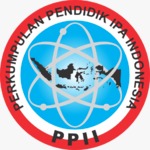A Study of Grouping of Earthquake Damage from Magnitude Scale in Lombok Using K-Means Modeling
DOI:
https://doi.org/10.29408/kpj.v8i3.27563Keywords:
K-means model, earthquake, grouping, LombokAbstract
This study aims to group earthquake damage from its magnitude scale and visualize it on a geographical map. The magnitude of the earthquake was grouped using the K-means model. It is one of the most popular and effective clustering models in grouping data, such as earthquake data. The dataset used in this study is earthquake data for the last ten years on Lombok Island. The optimal number of clusters was used which is 2 in this case, based on the highest Silhouette score of 0.930. The highest Silhouette score shows the optimal number of clusters. The cluster on the geographical map shows most earthquakes' distribution in Northen Lombok Island with cluster 1 consisting of 145 earthquakes, while cluster 2 consists of 3 earthquakes. In addition, the earthquake's damage based on its magnitude scale, there were four different kinds of earthquake damage: slight, limited, minor, and severe damage that have occurred for the last ten years in Lombok Island. Minor and Slight damages were dominant, respectively. However, severe damage occurred in the northern part of Lombok Island due to an earthquake in 2018.
References
Abdullah, D., Susilo, S., Ahmar, A. S., & Rahmat, R. R. (2022). The application of K ‑ means clustering for province clustering in Indonesia of the risk of the COVID-19 pandemic based on COVID-19 data. Quality & Quantity, 56(3), 1283–1291. https://doi.org/10.1007/s11135-021-01176-w
Dwitiyanti, N., Kumala, S. A., & Handayani, S. D. (2023). Penerapan metode k-means pada klasterisasi wilayah rawan gempa di indonesia. 6, 1029–1037.
Irawan, L., Hasibuan, L. H., & Fauzi. (2020). Analisa Prediksi Efek Kerusakan Gempa Dari Magnitudo ( Skala Richter ) Dengan Metode Algoritma Id3 Menggunakan Aplikasi Data. 14(2), 189–201. https://doi.org/https://doi.org/10.47111/JTI
Kertanah, Rahadi, I., Novianti, B. A., Syahidi, K., Putra, M., Gazali, M., & Hirzi, R. H. (2022). Indonesian Physical Review. Indonesian Physical Review, 5(3), 197–207. https://doi.org/https://doi.org/10.29303/ip r.v5i3.148
Kirana, M. C., Perkasa, N. P., Zainuddin, M., Maidel, L., Informatika, T., & Batam, P. N. (2019). Visualisasi Kualitas Penyebaran Informasi Gempa Bumi di Indonesia Menggunakan Twitter. Journal of Applied Informatics and Computing (JAIC), 3(1), 23–32.
Madhulatha, T. S. (2012). AN OVERVIEW ON CLUSTERING METHODS. IOSR Journal of Engineering, 2(4), 719–725. https://doi.org/https://doi.org/10.48550/arXiv.1205.1117
Mardi, Y. (2016). Data Mining : Klasifikasi Menggunakan Algoritma C4 . 5. Jurnal Edik Informatika, 2, 213–219. https://doi.org/https://doi.org/10.22202/ei.2016.v2i2.1465
Murdiaty, Angela, Sylvia, C. (2020). Pengelompokkan Data Bencana Alam Berdasarkan Wilayah , Waktu , Jumlah Korban dan Kerusakan Fasilitas Dengan Algoritma K-Means. JURNAL MEDIA INFORMATIKA BUDIDARMA, 4, 744–752. https://doi.org/10.30865/mib.v4i3.2213
Novianti, P., Setyorini, D., & Rafflesia, U. (2017). K-Means cluster analysis in earthquake epicenter clustering. 3(2), 81–89.
Raghuwanshi, S. S., & Arya, P. (2012). Comparison of K-means and Modified K-mean algorithms for Large Data-set Abstract : International Journal of Computing, Communications and Networking, 1(3), 106–110.
Rifa, I. H., & Pratiwi, Hasih, R. (2019). Implementasi algoritma clara untuk data gempa bumi di indonesia 1 1,2,3. SEMINAR NASIONAL PENELITIAN PENDIDIKAN MATEMATIKA (SNP2M), 2006, 161–166.
Setiawan, I. N., Krismawati, D., Pramana, S., Tanur, E. (2022). Klasterisasi Wilayah Rentan Bencana Alam Berupa Gerakan Tanah. Seminar Nasional Official Statistics, 669–676.
Utomo, D. P., & Purba, B. (2019). Penerapan Datamining pada Data Gempa Bumi Terhadap Potensi Tsunami di Indonesia. Prosiding Seminar Nasional Riset Information Science (SENARIS), September, 846–853.
USGS. (2024). Search Earthquake Catalog. https://earthquake.usgs.gov/earthquakes/search/. [Accessed September 10, 2024]
Wijaya, T. A., Utami, E., & Fatta, H. Al. (2024). Perbandingan Algoritma DBSCAN dan K-Means Clustering untuk Pengelompokan Data Gangguan PT . PLN UID Kalselteng. INNOVATIVE: Journal Of Social Science Research, 4, 8846–8854.
Downloads
Published
Issue
Section
License
Copyright (c) 2024 Kappa Journal

This work is licensed under a Creative Commons Attribution-ShareAlike 4.0 International License.
Semua tulisan pada jurnal ini menjadi tanggungjawab penuh penulis. Jurnal Kappa memberikan akses terbuka terhadap siapapun agar informasi dan temuan pada artikel tersebut bermanfaat bagi semua orang. Jurnal Kappa dapat diakses dan diunduh secara gratis, tanpa dipungut biaya, sesuai dengan lisensi creative commons yang digunakan








